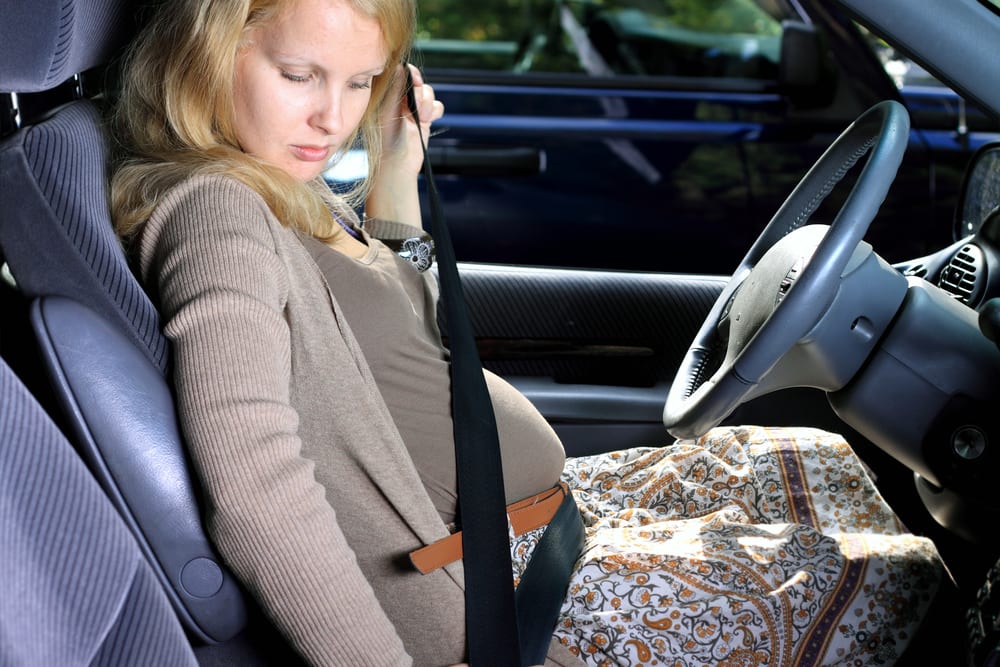

On a normal, day-to-day basis, car safety is second nature to most. You get in, strap on your seat belt, adjust your seat and mirrors, and drive off. It often becomes something you don’t think about, until you become responsible for the safety of someone else. Then it becomes a lot to think about.
The physical changes of pregnancy can bring on many of their own challenges, but not least is how they can affect your operating of a car and the safety features that we often take for granted. Because you’re safeguarding two people instead of one, special care should be taken when riding in a car, either as the driver or the passenger. The CDC estimates that roughly 33,000 pregnant women are involved in car accidents per year, which is one of the leading causes of trauma and death during pregnancy. But the risk can be kept to a minimum if proper technique is used, so you don’t have to avoid the convenience of driving entirely.
Seat belts should be worn properly at all times without exceptions. A swollen belly might make this a bit tricker to accomplish, but it can be done. The lap belt should be worn beneath the belly, while the shoulder harness should cross the chest and the shoulder without touching your neck. Never put the shoulder harness behind you - if it’s touching your neck and you can’t readjust it, try moving the seat back farther or straightening the recline.
Air bags are not substitutes for seat belts. They’re designed to support seat belts, but they can’t protect you from ejection in the event of an accident. On the other hand, they are an important safety feature and will help cushion any impact that may occur. For that reason, it’s best not to switch them off, even if the option is available.
When possible, the seat should be adjusted as far back as it can comfortably and safely, especially while driving. The biggest threat to the safety of an unborn child is striking the steering wheel, so putting at least ten inches between your chest and the steering wheel can help prevent any blunt force trauma in the event of an accident. If you’re on the shorter side, see about getting pedal extenders installed at your local dealership. If this isn’t an option either, you may need to relinquish being the driver for a little while!
If you can avoid driving at all, do. The passenger seat allows you to kick back and relax a safer distance from anything that can strike your stomach in the event of an impact or even a sudden stop. You’ll be able to sit further back from the dash in the event of an airbag deployment, which can actually help improve their efficacy, and helps make wearing a seat belt more comfortable, without forcing you to reach further for pedals or gear shifts.
If you are involved in a crash as either a passenger or as a driver, no matter how minor, see a doctor immediately. Even if you aren’t injured, there could be internal trauma that you can’t immediately detect. It’s better to err on the side of caution, and better for your peace of mind.
Of course, it goes without saying that avoiding driving entirely would be the safest route to go, but that’s also an option that is far from convenient. While pregnancy can often change our perspective of the world and make us that much more aware of potential dangers now that it’s not just about our own well-being, there’s no reason to relinquish our usual conveniences. Even if it takes a little more awareness of the risks than before, just consider it practice for things to come.



